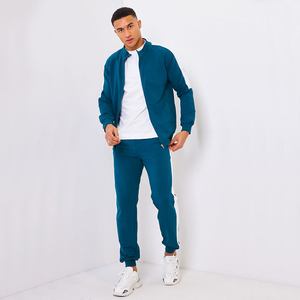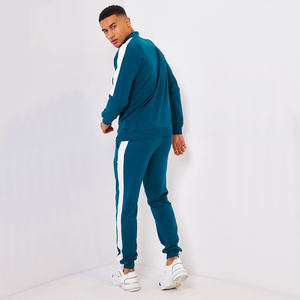
All categories
Featured selections
Trade Assurance
Buyer Central
Help Center
Get the app
Become a supplier

(2791 products available)




















































Full body compression suit for men comes in various types depending on the need and activity the individual is engaged in. Here are some of them:
Zippered Full Body Compression Suit
This compression suit is designed with a zip that runs along the length of the suit. The zipper makes it easy to put on and take off the suit. This suit also gives the wearer a snug fit because of the zip. A zippered full body compression suit is ideal for athletes and sportsmen engaging in activities that require changing outfits frequently. This suit is also suitable for people whose jobs involve being active all day.
Long Sleeve Full Body Compression Suit
As the name suggests, this suit covers the entire body from head to toe but has long sleeves. The long sleeves cover the arms to the wrists and protect them from compression. The long sleeves also shield the arms from external elements when exercising outdoors. A long-sleeved full-body compression suit is ideal for athletes, especially those engaged in sports that require arm movement.
Men’s Full Body compression suit with feet
This suit extends to the feet and covers the entire body up to the toes. The compression extends to the feet and provides support and blood circulation to the legs and lower body. It is ideal for athletes engaged in running and other sports that require leg movement.
Full Body Compression Suit with Hood
This suit has a hood to cover the head and neck. The hood provides additional compression and support to the head and neck. It also protects the head and neck from the elements during outdoor exercise. This suit is suitable for athletes and outdoor sports enthusiasts who need protection from environmental factors.
Custom Compression Suit
Compression suits can be made to fit the client's needs, specifications, and preferences. Custom compression suits are tailored to meet the specific needs of an individual or organization. They can include specific compression zones, customized branding, or unique design elements. This suit is ideal for professional athletes, teams, or individuals who require specific compression and support.
The design of men’s full body compression suit is quite complex since it involves different aspects that are meant to improve performance and comfort.
Here are some suggestions for wearing and matching a full-body compression suit:
Wearing suggestions
Wearing a full body compression suit can provide numerous benefits. These benefits are enhanced blood circulation, reduced muscle fatigue, and improved recovery times. Wearers should ensure a proper fit. This fit is snug but not restrictive. This allows the suit to function effectively. The material should be breathable and moisture-wicking. This helps keep the body dry and cool during intense activities. Users should put on the suit before warm-ups or workouts. Also, it can be worn during long-haul travel or post-exercise recovery. It can be worn during long-haul travel or post-exercise recovery. Overall, the compression suit enhances performance and aids recovery.
Matching suggestions
Matching a full-body compression suit with the right gear enhances performance and comfort. Pair the suit with moisture-wicking fabric. This helps regulate body temperature and keep the skin dry. Choose a top that offers UV protection for outdoor activities. Additionally, it should have a lightweight and breathable construction. Select socks that provide additional compression and support. Particularly in the arch and ankle areas. This helps reduce fatigue in the legs. For colder climates, layer the compression suit with thermal gear. Such as a vest or jacket made of fleece or merino wool. These materials offer warmth without compromising compression benefits. Footwear should be well-fitted and supportive. This ensures the maximum effectiveness of the compression suit. This combination of gear optimizes the benefits of a full-body compression suit and enhances overall performance.
Q1: What are the benefits of compression suits for men?
A1: Compression suits provide several benefits for men, especially for athletes and fitness enthusiasts. They improve blood circulation, which can enhance performance and reduce fatigue during exercise. Compression suits also support muscle recovery by reducing soreness and inflammation post-workout. Additionally, they offer joint support, which can help prevent injuries and improve stability. The moisture-wicking fabric keeps the body dry and comfortable by managing sweat effectively. Overall, compression suits can enhance endurance, speed up recovery, and provide comfort and support during physical activities.
Q2: How do compression suits affect muscle recovery?
A2: Compression suits help in muscle recovery by providing graduated compression that supports blood circulation. Improved blood flow helps remove metabolic waste products, such as lactic acid, from the muscles, reducing soreness and inflammation. Compression also helps maintain muscle alignment and reduce muscle vibration during and after exercise, which can further decrease muscle fatigue and damage. Wearing a compression suit post-workout can accelerate recovery time, allowing athletes to feel better faster and return to their training regimen.
Q3: Can compression suits be worn for warm-weather sports?
A3: Yes, compression suits are suitable for warm-weather sports. The moisture-wicking properties of the compression fabric help manage sweat and keep the body dry and cool. Compression suits quickly draw moisture away from the skin and allow for better evaporation, reducing the risk of overheating during intense physical activities in warm climates. Additionally, many compression suits are made with lightweight and breathable materials that enhance comfort and flexibility in hot weather. Choosing a compression suit with UV protection can also shield the skin from harmful sun rays during outdoor sports.
Q4: Are compression suits suitable for all body types?
A4: Compression suits are designed to fit various body types and provide the right level of compression for each individual. Compression suits are available in different sizes, from small to extra-large, to accommodate various body shapes and sizes. It's essential to measure specific areas such as the chest, waist, and hips to determine the right size for a comfortable and effective fit. Some brands also offer compression suits tailored for specific activities or purposes, such as triathlons or recovery, which may have slightly different fits and compression levels. Compression suits should fit snugly without restricting movement or causing discomfort. As compression technology advances, many brands are incorporating flexible and adaptive materials that conform to the body's shape, providing personalized compression regardless of body type.